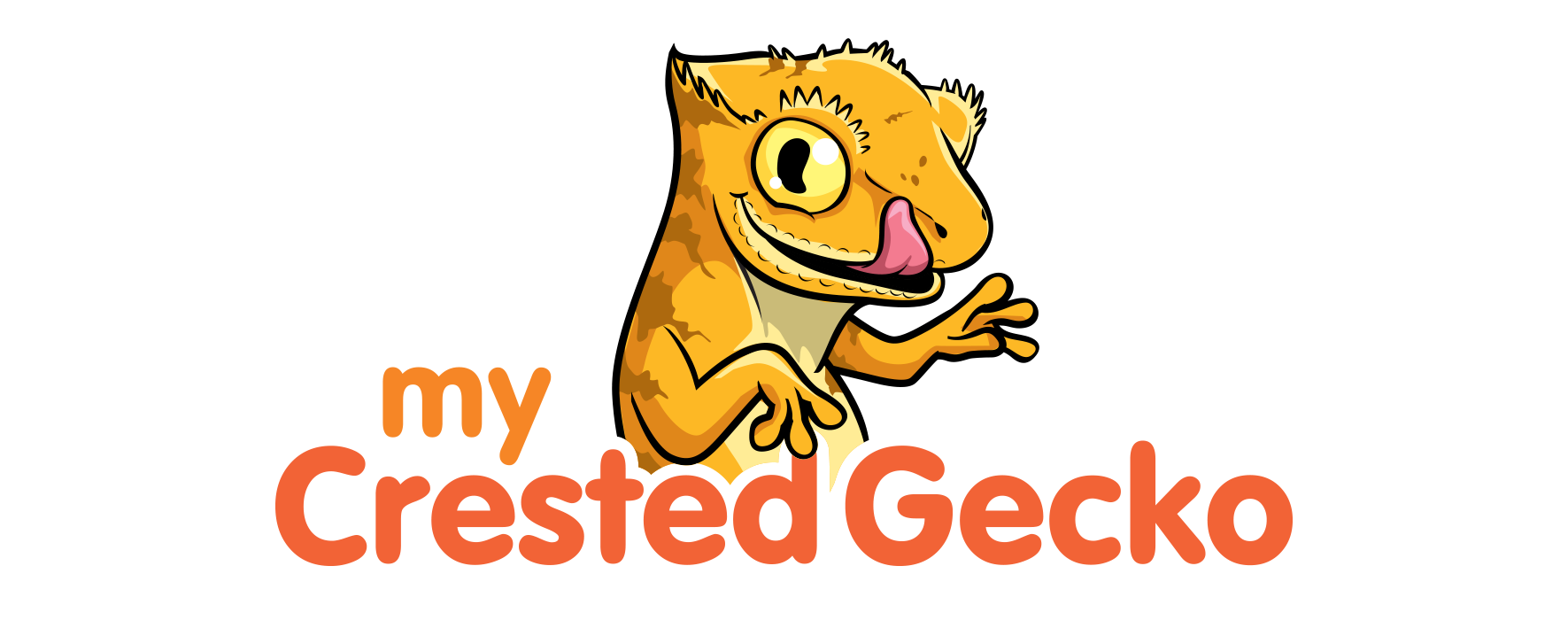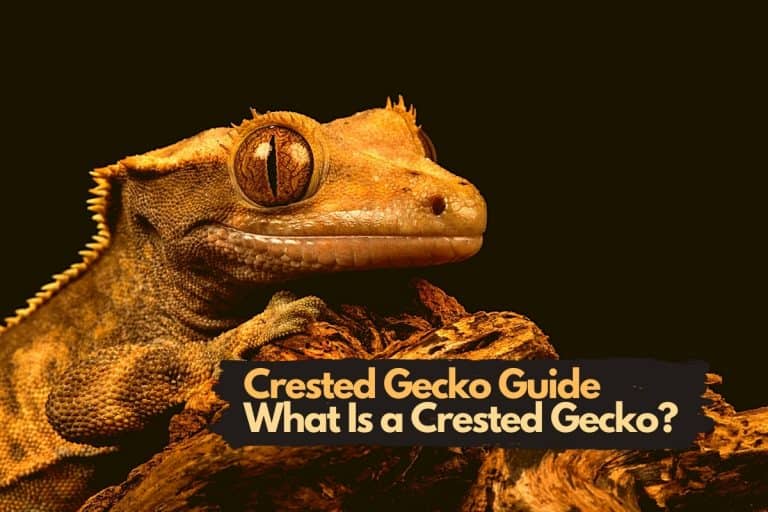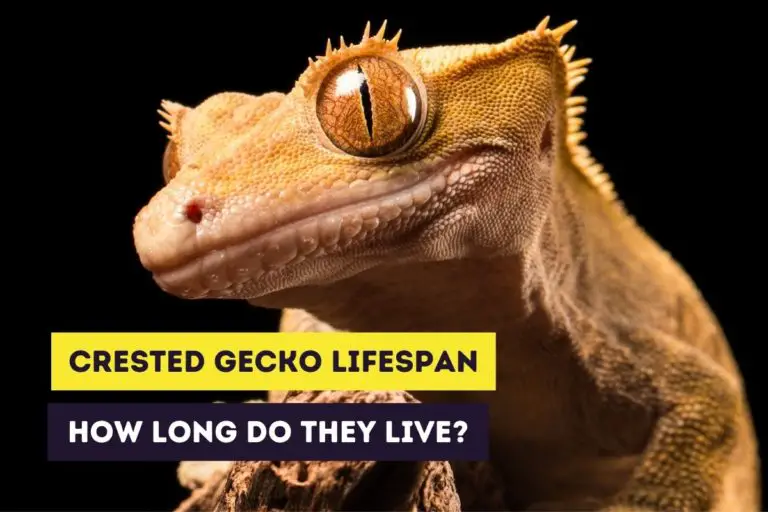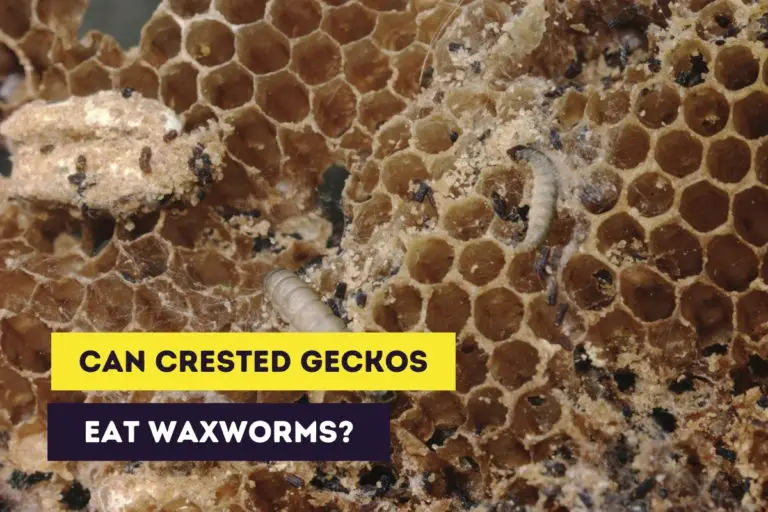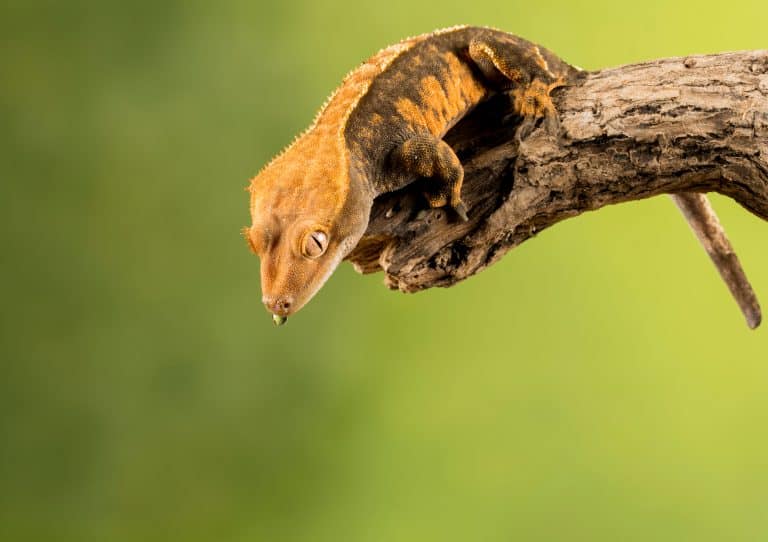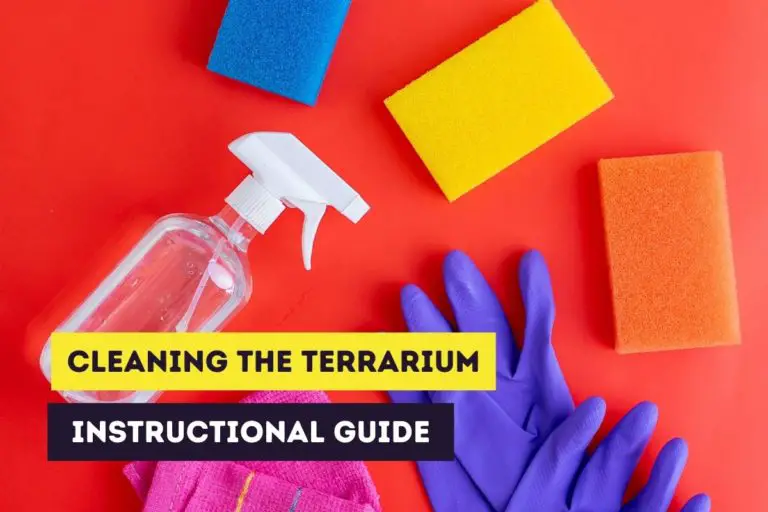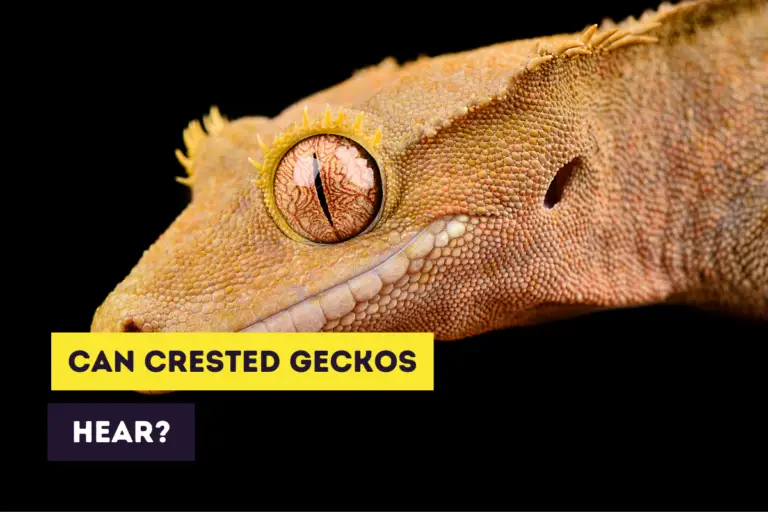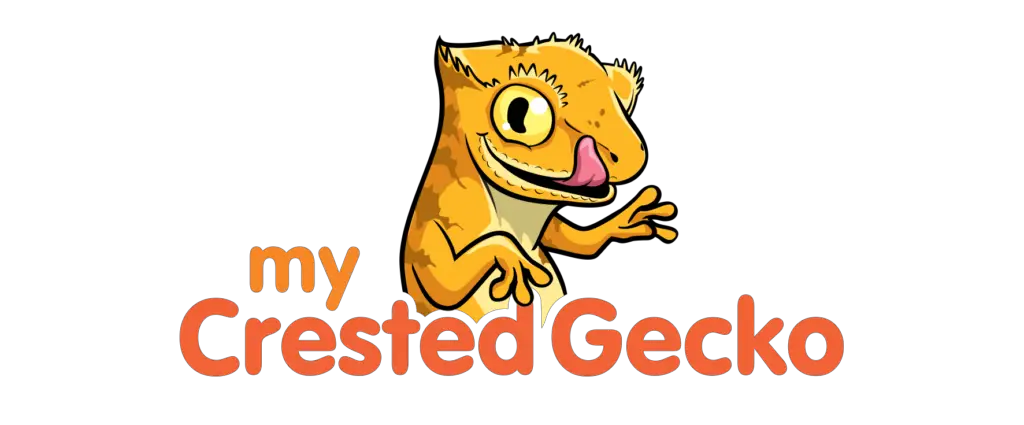Worm Feeding Guide: What Worms Can You Feed to Your Crested Gecko?
Crested geckos eat a lot of insects and fruits in the wild but most of the cresties in captivity are fed commercial diets and the occasional cricket and worm. Let’s start with an important note. While a lot – if not all- crested geckos will eat worms with a lot of taste, it’s not a good idea to base a diet solely on worms. You’ll want to give your crestie a balanced diet that contains worms but only occasionally.
Most new gecko owners don’t know exactly how to feed worms to their cresties. Of course, there’s a lot of talk about gut-loading, dusting and the size and type of worms but I didn’t find a lot of guides that explained in detail how to feed worms to a crested gecko.
In this guide, you’ll be learning about worms, how to gut-load and dust, and how to feed the worms to your crested gecko. In short, feeding worms to a crested gecko isn’t rocket science but it isn’t as simple as buying worms and throwing them in the terrarium. There’s a little bit more to it.
This site contains affiliate links to products we recommend and use ourselves. We may receive a commission for purchases that you make through these links. If you’re interested in learning more about our affiliate links, please visit our (affiliate) disclaimer.
If you’re interested in stickers or other products of crested geckos, you can always visit our Etsy Shop, which is called Artful Animalia. We currently only send stickers in the United States. If you’re interested in certain crested gecko-related products, don’t hesitate to contact us.
Worm Basics
Types of feeder worms
There are not one species of worms, in fact, there are a lot of different types of animals that have a “worm” or larvae stage. Only a few types of these worms are used as a feeder worm for pet birds or reptiles. The most common worms that are fed to crested geckos are:
- mealworms: mealworms are the larvae of the mealworm beetle (Tenebrio Molitor). They will typically measure about 1 inch (2.5 cm) but there are also smaller and larger specimens around. Mealworms are often used as food for fish, reptiles, and birds, but can also be consumed by humans. This kind of worm has a hard exoskeleton and is sometimes advised against feeding to crested geckos because of possible impaction.
- waxworms: waxworms are the larvae of wax moths, the lesser and the greater wax moth. They’re generally considered to be an ideal food source for insect-eating birds and reptiles. Waxworms are safe to feed to your crested gecko: they don’t have a hard exoskeleton and won’t cause impaction. The larvae of the lesser wax moth will typically measure about ½ inch (1.27 cm) while the larvae of the greater wax moth can reach up to 1 inch (2.5 cm).
- super worms: super worms are the larvae of the darkling beetle (Zophobas morio). More uncommon names are king worms, morio worms or zophobas. In forums, you’ll mostly find the terms super worms or supers. These worms measure between 1.7 and 2.25 inches (4.3 and 6.35 cm) and can sometimes be confused with large mealworms. The superworms are often fed to reptiles, birds, and fish. They do have strong mandibles that can hurt your crestie so you should crush the heads before feeding.
- hornworms: hornworms are the larvae of Carolina sphinx moth and the tobacco hawk moth. They’re less known as a food source for crested geckos and look weirder than other worms. Some people notice chemical burns when feeding hornworms. This might be caused by giving wild-collected hornworms which can accumulate poisonous substances from the plants they eat. Captive-bred hornworms are generally safe to feed. Hornworms grow also larger than other worms and can grow up to 2.8 inches (7 cm).
Growth cycle
The growth or life cycle of moths and beetles can be divided into four large stages:
- egg: both moths and beetles lay hundreds of eggs waiting to be hatched in a few days
- larvae: after hatching, the worm-like creatures come crawling out. These larvae or worms are the ones you’re going to feed to your crested gecko. The worms need to grow and become bigger. This means that they’re hungry and will start feeding on leaves and plants. As the larvae grow bigger they’ll need to shed their exoskeleton a few times. This process of shedding the exoskeleton is called “molting”. It can occur up to 10 times before the larvae go into the next stage, the pupae stage.
- pupae: the pupa or cocoon stage is a stage where the moth or beetle has the biggest change in form and will begin to form the shape of the adult moth or beetle. As the creature reaches adulthood, the adult moth or beetle will come out of this cocoon.
- adult: adult moths and beetles will try to mate and reproduce to start the cycle again.
The entire life cycle is usually between 5 and 7 weeks (so around 2 months), although a lot will depend on the moth/beetle species and environmental factors like the temperature.
Worm diet
The worms you’re going to feed are herbivores and eat plants, fruits, and vegetables. Worms aren’t that picky eater and will eat live and dying plant materials. Depending on the type of worm the diet can be a little bit different.
Buying Worms
Price range
Worms are really cheap but you can still find a lot of different prices for them. These prices depend on the number of worms, the quality of the food they’re fed and the size. Even then you can find price differences depending on the region you live in.
I gathered a list of websites and brands that sell worms and the prices they ask. Of course, prices change all the time but it gives an indication of the average price you can expect to pay.
Prices of mealworms
The company Rainbow Mealworms offers a wide variety of mealworms. You can select the number of worms and the size. The prices range from $1.50 for a small cup with 50 mealworms to $6.90 for 1000 mealworms.
Fluker Farms offers more limited numbers and sizes of mealworms. You can get medium sizes mealworms here The price ranges from $6.50 for 250 worms to $8.90 for 1000 mealworms. They normally do have larger sized mealworms but at the moment of writing these weren’t available.
Timberline Fisheries has a product line called Vita-Bugs. These can be bought in pet stores and online. Prices vary but are around $3.00 for 100 mealworms.
Lastly, Josh’s Frogs sells mealworms in bulk numbers (100, 250, 500, 1000 – and even larger quantities). The price ranges from $3.99 for 100 mealworms to $9.99 for 1000 mealworms.
Prices of waxworms
The company Rainbow Mealworms also offers a wide variety of waxworms. You can select the number of worms and the size. The prices range from $3.99 for a small cup with 50 waxworms to $40.00 for 1000 waxworms.
Timberline Fisheries has a product line called Vita-Bugs. These can be bought in pet stores and online. Prices range from $2.99 for 25 waxworms to $26.50 for 1000 waxworms.
Lastly, Josh’s Frogs is a seller of waxworms. The price ranges from $3.49 for 25 waxworms to $36.99 for 1000 waxworms.
Prices of superworms
The company Rainbow Mealworms also offers a wide variety of waxworms. You can select the number of worms and the size. The prices range from $1.75 for a small cup with 25
Timberline Fisheries has a product line called Vita-Bugs. These can be bought in pet stores and online. Prices range from $2.99 for 25
Lastly, Josh’s Frogs is a seller of
If you’re not entirely sure about the number of worms you need, you can start with a small number and buy them at your local pet store.
Where to buy
All of the above-mentioned worms are widely available as food for reptiles, birds, and amphibians. So, you won’t have a lot of problems finding a seller of worms.
When you don’t need a lot of worms, you’re probably best buying the worms from your local pet store. Most pet stores also sell worms and generally use the same price range as online stores. You can also try finding worms at fishing bait stores when your local pet store doesn’t have any worms available.
Popular online sellers (shipment US):
Josh’s Frogs
Rainbow Mealworms
Vita-Bugs
If you live in a region where it’s difficult to find worms, you want to try online sellers. They can often provide great deals because they breed them on a large scale.
Preparing Worms for Your Crested Gecko
Keeping worms
When you buy worms you usually get them in a small container. You want to keep the worms in a large glass, metal or plastic container with tall sides. This prevents the worms from crawling out of the counter. It’s also important that the sides are smooth so they can’t climb out.
Ideal container:
- at least 3.15 inches (8 cm) tall
- secure screen lid
- smooth sides
You can buy such a container for $20 or you can build your own container out of DIY material if you don’t want to spend that much.
Gut-loading
When you buy worms they aren’t ready to be fed to your crested gecko. You will need to gut-load them. If you feed your crestie with these worms they won’t get a lot of nutrition.
The idea of gut-loading is that you give a diet with a high nutritional value to the worms. The crested gecko eats the worms and gets the same valuable nutrition.
The gut-loading has to be done at least 12 hours – but no longer than 24 hours – before feeding them to your crestie.
Gut-loading diet:
- apples
- citrus fruits like oranges
- dark green vegetables like kale, romaine lettuce, green-leafed lettuce, mustard, and collard greens
- carrots
You should always wash the fruit and vegetables before you feed them to the worms – the same goes for feeding fruits and vegetables to your crestie.
Side note: although real fruit and vegetables are the best for gut-loading worms, there are also commercial gut-loading powders available. These are a good budget option if you don’t have a lot of money and time.
Dusting
You’ll also need to add supplements. These supplements contain vitamins and minerals, most importantly calcium. The supplements come in a powdered form and you will have to powder the worms with the supplements, hence the term “dusting”.
There are a lot of different supplements available but the best ones consist of ultra-fine powders. These powders are better for dusting because the powder sticks a lot better on the exoskeleton of the worm and doesn’t fall off as quickly.
What vitamins and minerals do the supplements have to contain?
- calcium
- vitamin A
- vitamin D3
- phosphorus
3 easy steps to dust
- place the appropriate amount of worms in a small cup or container
- take a little bit of the supplement and sprinkle it on the worms
- shake the container – not too hard – so the supplements get distributed evenly
Feeding Worms to Your Crested Gecko
Alive or dead?
If you don’t like to have living worms around, you could also try feeding freeze-dried worms. You obviously can’t gut-load them as they’re not alive but you can still dust them. It’s possible that your crested gecko won’t eat these because they aren’t alive. There are vibrating food dishes available that fix this issue.
When feeding mealworms or super worms it’s best to crush the head so they can’t hurt your crestie. You can also wait until these worms with a harder exoskeleton have “molted” so their exoskeleton is softer to eat and swallow.
How many times a week can I give worms?
Contrary to crickets, worms should not be fed every week. They’re high in fat and low in other nutrients. No matter the kind of worm, you should use them only as treats and give them only once or twice each month.
What worm sizes can you give?
Hatchlings (older than 1 month) can eat a worm but only if the worm is very small and preferably a wax worm. It’s generally wise to stay away from giving worms to hatchlings and only start feeding worms as they grow older (juvenile and adult).
The size of worm you can give to a juvenile and adult crested gecko will depend on the size of your crestie but – in general – worms between 1/2 inch and 3/4 inches (between 1,2 and 1,9 cm) can be fed to adult crested geckos.
A good guideline is that the worm should never be larger than the distance between the crested gecko’s eyes.
How many worms do I give?
You don’t want to give too many worms because they aren’t that healthy, even when gut-loaded and dusted. You should limit the number of times you give worms to your crested gecko and the number of worms you give.
Hatchlings shouldn’t be fed worms. Juveniles and adults can eat up to four worms but will usually eat one or two worms a month.
How to feed the worms?
Most people will just feed the worms by putting them in the terrarium or giving them to the crestie by a feeding tong. You take a worm with a tong and hold it near the crested gecko. This may not always work but if you’re afraid of a crested gecko accidentally biting your fingers when feeding by hand it can be an alternative.
Placing the worms in the terrarium
If you give too many worms to your crestie – or if they aren’t hungry – the leftover worms will stay alive and possible hide in the terrarium – if they’re alive. This is dangerous because the worms may stay alive and go to the next stages of their life and become a beetle or moth.
So if you see that your crested gecko hasn’t eaten all of the worms, remove the leftover from the terrarium. Don’t wait for the worms to grow up and become a moth or beetle. Just take them out of the tank after feeding or the next day.
Alternative: a separate feeding tank
There are a lot of crestie owners that feed worms to their crested gecko in a separate terrarium or container. The substrate is then replaced with paper towels.
But why should you choose a separate terrarium? Well, crested geckos aren’t the most efficient hunters and can easily miss the worms. When they jump on the worm it’s possible that they accidentally eat substrate and this is a bad thing.
The separate container is also a good alternative to prevent leftover worms. If you leave them in your terrarium they can hide in the substrate or foliage and start eating your terrarium plants and hurt your crestie.
Related Questions
Are worms healthy for a crested gecko?
Worms can be a good addition to your crested gecko’s diet but should rather be considered as treats. Too many worms can cause an imbalance in the calcium-phosphorus ratio. Mealworms have a ratio of 1:7, waxworms have a ratio of 1:6 and superworms have a ratio of 1:18. By themselves they are, just like crickets, low in nutrition so if they’re not gut-loaded and dusted with supplements they can slowly hurt the health of your crestie.
Why is my crested gecko not eating his worms?
Not every crested gecko is fond of worms and they may not eat them. The reasons can be different. It’s often a case of not liking the taste or that they are too slow-moving. It’s also possible that the worms are too small. If you do notice that your crested gecko is not only avoiding the worms but also doesn’t eat his other food, it’s time to go to a vet.
Want to Learn More?
If you want to learn more about crested geckos as pets, please read the following articles.
If you’re interested in getting crested geckos as pets you should also definitely read our article about baby and juvenile crested gecko care or (adult) crested gecko care.
